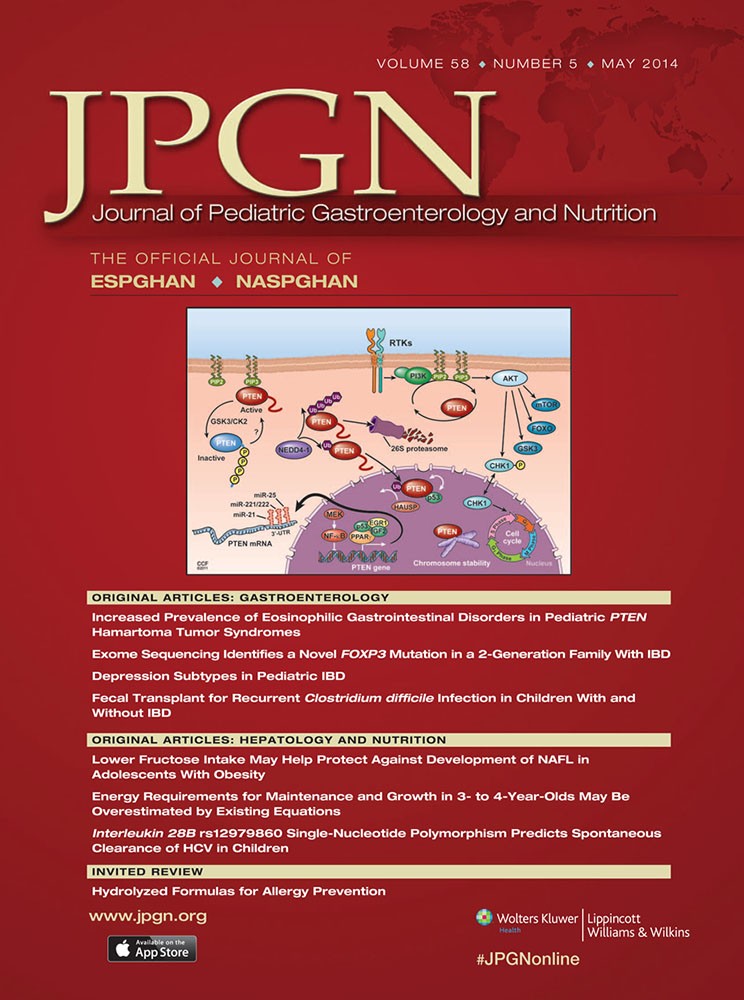A 4-Polymorphism Risk Score Predicts Steatohepatitis in Children With Nonalcoholic Fatty Liver Disease
Drs Nobili and Donati participated equally in this study.
The authors report no conflicts of interest.
ABSTRACT
Objective:
Nonalcoholic fatty liver disease (NAFLD) has become the most common cause of chronic liver disease in industrialized countries in adults and children, following the trail of the epidemic diffusion of obesity. Nonalcoholic steatohepatitis (NASH) is a potentially serious form of NAFLD linked with a significant increase in overall and liver-related morbidity and mortality. Because diagnosis still requires liver biopsy, there is urgent need of developing noninvasive early markers. The aim of the present study was to assess whether the simultaneous detection of genetic risk factors could predict NASH.
Method:
We enrolled 152 untreated, consecutive obese children and adolescents with biopsy-proven NAFLD and increased liver enzymes. The PNPLA3 rs738409 C>G (I148 M), SOD2 rs4880 C>T, KLF6 rs3750861 G>A, and LPIN1 rs13412852 C>T polymorphisms were detected by Taqman assays.
Results:
A multivariate logistic model based on the genetic risk factors significantly predicted NASH (area under the receiver-operating characteristic curve [AUC] 0.75, 95% confidence interval [CI] 0.67–0.82, P < 0.0001), performing better than a clinical risk score identified at stepwise regression based on age, aspartate aminotransferase levels, and diastolic blood pressure (AUC 0.66, 95% CI 0.57–0.75). A single cutoff value of the genetic risk score had 90% sensitivity and 36% specificity for NASH. A risk score combining the clinical and genetic risk factors resulted in an AUC of 0.80 (95% CI 0.73–0.87).
Conclusions:
A score based on genetic risk factors significantly predicts NASH in obese children with increased liver enzymes, representing a proof-of-principle that genetic scores may be useful to predict long-term outcomes of the disease and guide clinical management.




